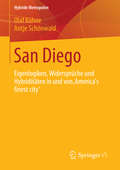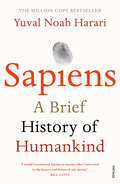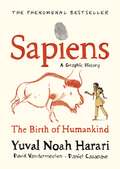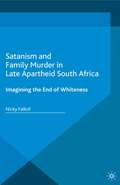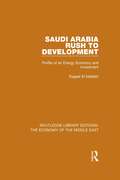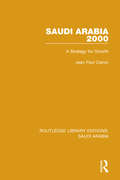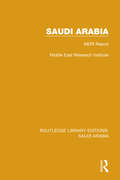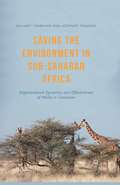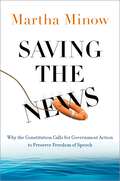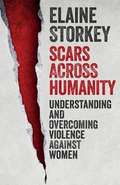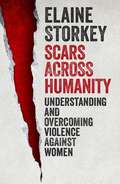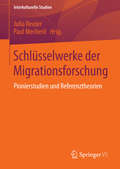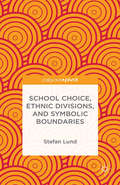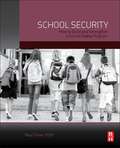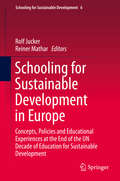- Table View
- List View
Same Sex Couples - Comparative Insights on Marriage and Cohabitation (Ius Gentium: Comparative Perspectives on Law and Justice #42)
by Macarena SáezThis book shows six different realities of same-sex families. They range from full recognition of same-sex marriage to full invisibility of gay and lesbian individuals and their families. The broad spectrum of experiences presented in this book share some commonalities: in all of them legal scholars and civil society are moving legal boundaries or thinking of spaces within rigid legal systems for same-sex families to function. In all of them there have been legal claims to recognize the existence of same-sex families. The difference between them lies in the response of courts. Regardless of the type of legal system, when courts have viewed claims of same-sex couples and their families as problems of individual rights, they have responded with a constitutional narrative protecting same-sex couples and their families. When courts respond to these claims with rigid concepts of what a family is and what marriage is as if legal concepts where unmodifiable, same-sex couples have remained outside the protection of the law.Until forty years ago marriage was the only union considered legitimate to form a family. Today more than 30 countries have granted rights to same sex couples, including several that have opened up marriage to couples of the same sex. Every day there is a new bill being discussed or a new claim being brought to courts seeking formal recognition of same sex couples. Not all countries are open to changing their legal structures to accommodate same-sex couples, but even those with no visible changes are witnessing new voices in their communities challenging the status quo and envisioning more flexible legal systems.
San Diego: Eigenlogiken, Widersprüche und Hybriditäten in und von ‚America´s finest city‘ (Hybride Metropolen)
by Olaf Kühne Antje SchönwaldDie Entwicklungspfade von San Diego sind beeinflusst von der sozialen, kulturellen und ökonomischen Verschiedenheit der beiden Räume San Diego und Tijuana. Diese Verschiedenheit hat sich heute zu einer Ressource für Hybridisierungen entwickelt. Hybriditätsforschungen betrachten Kultur als Prozess, in dem sich Eigenes und Fremdes gegenseitig beeinflussen und bedingen. Mittels qualitativer Methoden werden die Biographien der hybriden Grenzmetropole nachvollzogen und die soziale Konstruktion von (Grenz-)Raum aus einer neuen Perspektive beleuchtet. Ergänzt wird diese Perspektive durch eine Analyse medialer Präsenz von San Diego und Tijuana.
The San Francisco System and Its Legacies: Continuation, Transformation and Historical Reconciliation in the Asia-Pacific (Asia's Transformations)
by Kimie HaraIn September 1951, Japan signed a peace treaty with forty-eight countries in San Francisco; in April 1952, the treaty came into effect. The San Francisco Peace Treaty is an international agreement that in significant ways shaped the post–World War II international order in the Asia-Pacific. With its associated security arrangements, it laid the foundation for the regional structure of Cold War confrontation: the "San Francisco System" fully reflected the strategic interests and policy priorities of the peace conference’s host nation, the United States. The treaty fell far short of settling outstanding issues in the wake of the Pacific War or facilitating a clean start for the "post-war" period. Rather, critical aspects of the settlement were left equivocal, and continue to have significant and worrisome implications for regional international relations. This book examines the key developments of the contentious political and security issues in the Asia-Pacific that share a common foundation in the post-war disposition of Japan, particularly the San Francisco Peace Treaty. These include both tangible and intangible issues, such as disputes over territories and "history" problems. Taking the San Francisco System as its conceptual grounding, the authors examine how these issues developed and have remained contentious long after the San Francisco arrangements. To provide bases for producing solutions, the chapters offer comprehensive accounts that explain and deepen our understanding of these complex regional issues and the San Francisco System as a whole. By closely and systematically examining the legacy and various ramifications of the San Francisco System, this fascinating book adds to our understanding of current and growing tensions in the region. As such, it will be of great interest to students and scholars of Asian studies, history, international relations and politics.
The San Francisco System and Its Legacies: Continuation, Transformation and Historical Reconciliation in the Asia-Pacific (Asia's Transformations)
by Kimie HaraIn September 1951, Japan signed a peace treaty with forty-eight countries in San Francisco; in April 1952, the treaty came into effect. The San Francisco Peace Treaty is an international agreement that in significant ways shaped the post–World War II international order in the Asia-Pacific. With its associated security arrangements, it laid the foundation for the regional structure of Cold War confrontation: the "San Francisco System" fully reflected the strategic interests and policy priorities of the peace conference’s host nation, the United States. The treaty fell far short of settling outstanding issues in the wake of the Pacific War or facilitating a clean start for the "post-war" period. Rather, critical aspects of the settlement were left equivocal, and continue to have significant and worrisome implications for regional international relations. This book examines the key developments of the contentious political and security issues in the Asia-Pacific that share a common foundation in the post-war disposition of Japan, particularly the San Francisco Peace Treaty. These include both tangible and intangible issues, such as disputes over territories and "history" problems. Taking the San Francisco System as its conceptual grounding, the authors examine how these issues developed and have remained contentious long after the San Francisco arrangements. To provide bases for producing solutions, the chapters offer comprehensive accounts that explain and deepen our understanding of these complex regional issues and the San Francisco System as a whole. By closely and systematically examining the legacy and various ramifications of the San Francisco System, this fascinating book adds to our understanding of current and growing tensions in the region. As such, it will be of great interest to students and scholars of Asian studies, history, international relations and politics.
San Representation: Politics, Practice and Possibilities
by Keyan Tomaselli Michael WesselsThe San or Bushmen of southern Africa have exerted a fascination over generations of writers and scholars, from novelists and anarchists to ethnologists and geneticists, and also occupy a special place in the popular imagination as the First People and the contemporary remnant of spiritual and natural man. The ways in which particular groups of people from southern Africa have been traditionally categorised and positioned as objects of scrutiny by a range of academic disciplines is increasingly being contested and questioned. There is a growing awareness of the cultural, economic and genetic entanglement of the peoples of the region. This book examines how San and Khoe people are represented, by others, as well as by those who identify as San or Khoe. The book interrogates the ways in which disciplines, through their methodologies and ways of authorising knowledge, not only "discover" or "reveal" knowledge but produce it in ways that involve complex and often ambiguous relationships with power structures and forms of intellectual, symbolic and cultural capital. One major trend that emerges is that the San and Khoe can no longer be seen as people of the past but have to be acknowledged as contemporary and socially situated individuals and communities who are increasingly contesting the representations which others have imposed on them. This book was originally published as a special issue of Critical Arts: A Journal of South-North Cultural and Media Studies.
San Representation: Politics, Practice and Possibilities
by Keyan G. Tomaselli Michael WesselsThe San or Bushmen of southern Africa have exerted a fascination over generations of writers and scholars, from novelists and anarchists to ethnologists and geneticists, and also occupy a special place in the popular imagination as the First People and the contemporary remnant of spiritual and natural man. The ways in which particular groups of people from southern Africa have been traditionally categorised and positioned as objects of scrutiny by a range of academic disciplines is increasingly being contested and questioned. There is a growing awareness of the cultural, economic and genetic entanglement of the peoples of the region. This book examines how San and Khoe people are represented, by others, as well as by those who identify as San or Khoe. The book interrogates the ways in which disciplines, through their methodologies and ways of authorising knowledge, not only "discover" or "reveal" knowledge but produce it in ways that involve complex and often ambiguous relationships with power structures and forms of intellectual, symbolic and cultural capital. One major trend that emerges is that the San and Khoe can no longer be seen as people of the past but have to be acknowledged as contemporary and socially situated individuals and communities who are increasingly contesting the representations which others have imposed on them. This book was originally published as a special issue of Critical Arts: A Journal of South-North Cultural and Media Studies.
Sapiens: A Brief History of Humankind (Patterns Of Life Ser.)
by Yuval Noah Harari**Over 2 million copies sold****The Sunday Times #1 bestseller**FIRE gave us powerFARMING made us hungry for moreMONEY gave us purposeSCIENCE made us deadlyThis is the thrilling account of our extraordinary history – from insignificant apes to rulers of the world.
Sapiens Graphic Novel: Volume 1
by Yuval Noah Harari David VandermeulenThe first volume of the graphic adaptation of Yuval Noah Harari's global phenomenon and smash Sunday Times #1 bestseller, with gorgeous full-colour illustrations and a beautiful package - the perfect gift for the curious beings in your life.One hundred thousand years ago, at least six different species of humans inhabited Earth. Yet today there is only one-homo sapiens. What happened to the others? And what may happen to us?In this first volume of the full-colour illustrated adaptation of his groundbreaking book, renowned historian Yuval Harari tells the story of humankind's creation and evolution, exploring the ways in which biology and history have defined us and enhanced our understanding of what it means to be "human". From examining the role evolving humans have played in the global ecosystem to charting the rise of empires, Sapiens challenges us to reconsider accepted beliefs, connect past developments with contemporary concerns, and view specific events within the context of larger ideas. Featuring 256 pages of full-colour illustrations and easy-to-understand text covering the first part of the full-length original edition, this adaptation of the mind-expanding book furthers the ongoing conversation as it introduces Harari's ideas to a wider new readership.
Sappho (Understanding Classics)
by Page DuBoisSappho has been constructed as many things: proto-feminist, lesbian icon and even – by the Victorians – chaste headmistress of a girls' finishing school. Yet ironically, as Page DuBois shows, the historical poet herself remains elusive. We know that Sappho's contemporary Alcaeus described her as 'violet, pure, honey-smiling Sappho'; and that the rhetorician and philosopher Maximus of Tyre saw her, perhaps less enthusiastically, as 'small and dark'. We also know that her 7th/6th century BCE island of Lesbos was riven by tyrannical and aristocratic factionalism and that she was probably exiled to Sicily. Much of the rest is speculative. DuBois suggests that the value of Sappho lies elsewhere: in her remarkable verse, and in the poet's reception
Satanism and Family Murder in Late Apartheid South Africa: Imagining the End of Whiteness
by Nicky FalkofThis book discusses two moral panics that appeared in the media in late apartheid South Africa: the Satanism scare and the so-called epidemic of white family murder. The analysis of these symptoms of social and political change reveals important truths about whiteness, gender, violence, history, nationalism and injustice in South Africa and beyond.
Saudi Arabia: Profile of an Energy Economy and Investment (Routledge Library Editions: The Economy of the Middle East)
by Ragaei el MallakhSaudi Arabia is one of the most controversial and least known of the Arab nations. A land of massive contrasts – between its densely populated cities and its vast expanses of desert; between the recent poverty of its villages and the massive wealth created by oil, which is drawing a labour force from most of the neighbouring countries; between the aggressive technocratic and industrial thrust forward and the strongly traditionalist Islamic basis of the ruling ideologies – it has progressed to world prominence in a matter of years after centuries of little or no change. The change is not so much a surge, or even a thrust, as a rush into the industrialized and wealthy world. This book analyzes the problems and achievements of Saudi development and provides the first detailed critique of the Third Development Plan. First published in 1982.
Saudi Arabia: Profile of an Energy Economy and Investment (Routledge Library Editions: The Economy of the Middle East)
by Ragaei el MallakhSaudi Arabia is one of the most controversial and least known of the Arab nations. A land of massive contrasts – between its densely populated cities and its vast expanses of desert; between the recent poverty of its villages and the massive wealth created by oil, which is drawing a labour force from most of the neighbouring countries; between the aggressive technocratic and industrial thrust forward and the strongly traditionalist Islamic basis of the ruling ideologies – it has progressed to world prominence in a matter of years after centuries of little or no change. The change is not so much a surge, or even a thrust, as a rush into the industrialized and wealthy world. This book analyzes the problems and achievements of Saudi development and provides the first detailed critique of the Third Development Plan. First published in 1982.
Saudi Arabia 2000 (RLE Saudi Arabia): A Strategy for Growth
by Jean CleronThe sharp increase in both the price of crude oil and resulting revenues to Saudi Arabia has seen the rapid growth of the kingdom’s international trade and a large accumulation of financial assets. These sudden and drastic changes have taken place, however, within a mainly traditional economy, unprepared to cope with a massive increase in government revenues. Long-term planning is therefore of the utmost importance to Saudi Arabia, and this study, first published in 1978, presents a detailed analysis of the structure of the kingdom’s economy, represented by a dynamic simulation model. The first part of the book considers, among other issues, the production of crude oil, the non-oil production, the accumulation of productive capital, the Saudi population and labour force, the mechanism of domestic inflation, and the relationship of Saudi Arabia with the rest of the world. The second part then presents simulation experiments conducted upon the model, which are commented on and analysed. A concluding chapter illustrates how such a study may be extended to cover several other countries in the Middle East.
Saudi Arabia 2000 (RLE Saudi Arabia): A Strategy for Growth
by Jean CleronThe sharp increase in both the price of crude oil and resulting revenues to Saudi Arabia has seen the rapid growth of the kingdom’s international trade and a large accumulation of financial assets. These sudden and drastic changes have taken place, however, within a mainly traditional economy, unprepared to cope with a massive increase in government revenues. Long-term planning is therefore of the utmost importance to Saudi Arabia, and this study, first published in 1978, presents a detailed analysis of the structure of the kingdom’s economy, represented by a dynamic simulation model. The first part of the book considers, among other issues, the production of crude oil, the non-oil production, the accumulation of productive capital, the Saudi population and labour force, the mechanism of domestic inflation, and the relationship of Saudi Arabia with the rest of the world. The second part then presents simulation experiments conducted upon the model, which are commented on and analysed. A concluding chapter illustrates how such a study may be extended to cover several other countries in the Middle East.
Saudi Arabia (RLE Saudi Arabia): MERI Report
by Middle East Research InstituteThe MERI Reports on the Middle East quickly established themselves as the most authoritative and up-to-date information on the state of affairs in the region. This study, focusing on Saudi Arabia was fist published in 1985, provides vital analysis of the political and economic issues affecting the country. It combines a crisp and incisive survey of the politics and economy of the country, as well as providing statistical material on all the key data of the political economy. 1. Background 2. Political Analysis 3. Economic Analysis 4. Saudi Arabian Statistical Appendix
Saudi Arabia (RLE Saudi Arabia): MERI Report
by Middle East Research InstituteThe MERI Reports on the Middle East quickly established themselves as the most authoritative and up-to-date information on the state of affairs in the region. This study, focusing on Saudi Arabia was fist published in 1985, provides vital analysis of the political and economic issues affecting the country. It combines a crisp and incisive survey of the politics and economy of the country, as well as providing statistical material on all the key data of the political economy. 1. Background 2. Political Analysis 3. Economic Analysis 4. Saudi Arabian Statistical Appendix
Saving the Environment in Sub-Saharan Africa: Organizational Dynamics and Effectiveness of NGOs in Cameroon
by William T. Markham Lotsmart FonjongThis book describes how NGOs' efforts to promote sustainable development are affected by their funding, management strategies, and relationships with government, communities, and other NGOs. The authors explore implications for theory and offer suggestions for increasing NGO effectiveness.
Saving the News: Why the Constitution Calls for Government Action to Preserve Freedom of Speech (Inalienable Rights)
by Martha MinowA detailed argument of how our government has interfered in the direction of America's media landscape that traces major transformations in media since the printing press and charts a path for reform. In Saving the News, Martha Minow takes stock of the new media landscape. She focuses on the extent to which our constitutional system is to blame for the current parlous state of affairs and on our government's responsibilities for alleviating the problem. As Minow shows, the First Amendment of the US Constitution assumes the existence and durability of a private industry. Although the First Amendment does not govern the conduct of entirely private enterprises, nothing in the Constitution forecloses government action to regulate concentrated economic power, to require disclosure of who is financing communications, or to support news initiatives where there are market failures. Moreover, the federal government has contributed financial resources, laws, and regulations to develop and shape media in the United States. Thus, Minow argues that the transformation of media from printing presses to the internet was shaped by deliberate government policies that influenced the direction of private enterprise. In short, the government has crafted the direction and contours of America's media ecosystem. Building upon this basic argument, Minow outlines an array of reforms, including a new fairness doctrine, regulating digital platforms as public utilities, using antitrust authority to regulate the media, policing fraud, and more robust funding of public media. As she stresses, such reforms are not merely plausible ideas; they are the kinds of initiatives needed if the First Amendment guarantee of freedom of the press continues to hold meaning in the twenty-first century.
Scars Across Humanity: Understanding And Overcoming Violence Against Women
by Elaine StorkeyScars Across Humanity is a thoroughly documented investigation into the causes of violence against women, past and present. Global in scope, and addressing the issues as they affect women at every stage of life, this powerful book also offers a probing critique of evolutionary and social-scientific accounts of gender-based violence, and of the role that religion can play, for good or ill, in the struggle against this worldwide problem.
Scars Across Humanity: Understanding and Overcoming Violence Against Women
by Elaine StorkeyScars Across Humanity is a thoroughly documented investigation into the causes of violence against women, past and present. Global in scope, and addressing the issues as they affect women at every stage of life, this powerful book also offers a probing critique of evolutionary and social-scientific accounts of gender-based violence, and of the role that religion can play, for good or ill, in the struggle against this worldwide problem.
The Schenker Project: Culture, Race, and Music Theory in Fin-de-siècle Vienna
by Nicholas CookToday we think of Heinrich Schenker, who lived in Vienna from 1884 until his death in 1935, as the most influential music theorist of the twentieth century. But he saw his theoretical writings as part of a comprehensive project for the reform of musical composition, performance, criticism, and education-and beyond that, as addressing fundamental cultural, social, and political problems of the deeply troubled age in which he lived. This book aims to explain Schenker's project through reading his key works within a series of period contexts. These include music criticism, the field in which Schenker first made his name; Viennese modernism, particularly the debate over architectural ornamentation; German cultural conservatism, which is the source of many of Schenker's most deeply entrenched values; and Schenker's own position as a Galician Jew who came to Vienna just as fully racialized anti-semitism was developing there. As well as presenting an unfamiliar perspective on the cultural and political ferment of fin-de-siècle Vienna, this book reveals how deeply Schenker's theory is permeated by the social and political. It also raises issues concerning the meaning and value of music theory, and the extent to which today's music-theoretical agenda unwittingly reflects the values and concerns of a very different world.
Schlüsselwerke der Migrationsforschung: Pionierstudien und Referenztheorien (Interkulturelle Studien)
by Julia Reuter Paul MecherilDer Band umfasst Beiträge, die einen orientierenden Überblick über klassische Schlüsselwerke der Migrationsforschung geben. Die Beiträge erläutern die ideengeschichtliche und theoretische Verortung der Schlüsseltexte, ihre Forschungsperspektive, zentrale empirische Befunde sowie ihre interdisziplinäre Rezeption und aktuellen Bezugsfelder. Der Band ist in zwei Abschnitte unterteilt. Im ersten stehen Pionierstudien der kultur- wie sozialwissenschaftlichen Migrationsforschung in der ersten Hälfte des 20. Jahrhunderts im Vordergrund; der zweite Abschnitt behandelt Referenztheorien und -konzepte einer kritischen Migrationsforschung. Der Band ist im Wesentlichen als Einstiegslektüre für Studierende und als Lehrbuch für Dozent_innen konzipiert, die sich mit dem Thema Migration aus wissenschaftlicher Perspektive befassen.
School Choice, Ethnic Divisions, and Symbolic Boundaries
by S. LundThis book enriches empirical and theoretical understandings of how school choice and school segregation are generated by the construction and negotiation of ethnic divisions by placing emphasis on feelings of belonging and we-ness as important structuring forces that guide and restrict students' school choices.
School Security: How to Build and Strengthen a School Safety Program
by Paul TimmIt seems that every day there’s a new story about a security lapse, emergency lock-down, or violent act taking place at a school somewhere in the United States. Today it’s simply inexcusable not to have adequate security measures in place—regardless of how safe you think your community may be. In School Security, author Paul Timm, a nationally acclaimed school security expert, explains how to make your institution a safer place to learn with easy-to-follow steps. Throughout the book, Timm emphasizes a proactive rather than reactive approach to school security. Readers are introduced to basic loss prevention and safety concepts, including how to communicate safety information to students and staff, how to raise security awareness, and how to prepare for emergencies. The book discusses how to positively influence student behavior, lead staff training programs, and write sound security policies. An entire chapter is dedicated to describing what school security resources are available for follow-up reading and further training. School Security isn’t just a book for security professionals: it helps people without formal security training—namely, educators and school administrators—effectively address school risk. Serves as a comprehensive guide for building an effective security program at little or no cost. Covers fundamental crime prevention concepts, making it suitable for both school security professionals and educators with no formal security training. Addresses the risks commonly facing school administrators today, from access control to social media. Takes a holistic approach to school security rather than focusing on a particular threat or event.
Schooling for Sustainable Development in Europe: Concepts, Policies and Educational Experiences at the End of the UN Decade of Education for Sustainable Development (Schooling for Sustainable Development #6)
by Rolf Jucker Reiner MatharThis book examines the implementation of Education for Sustainable Development (ESD) programs in schools across Europe. It describes and analyzes how individual countries and the region as a whole have established teaching and learning methods to help students develop the competencies needed to be part of a sustainable society.Featuring chapters written by experts throughout Europe, the book first provides a general overview of ESD in various contexts, including the state-of-the-art of ESD theory and conceptual development; political and social analysis; the various concepts of ESD competencies; and teacher training. Next, the book details how ESD has been implemented in different European countries and regions, including: Sweden, Italy, Germany, Austria, Switzerland, Catalonia, Hungary, Finland, Norway, Denmark, Flanders, France, Cyprus, UK and the Netherlands.In recognition of education as a motor of change, the United Nations General Assembly declared a Decade of Education for Sustainable Development (2005-2014), calling for the integration of sustainable development into all aspects of education and learning. Inside this book, readers will find details on what has been done, as well as assessments of what more could be done, across Europe. It will help readers gain valuable insights into how to help students develop the knowledge, skills and values needed to shape a sustainable future.

